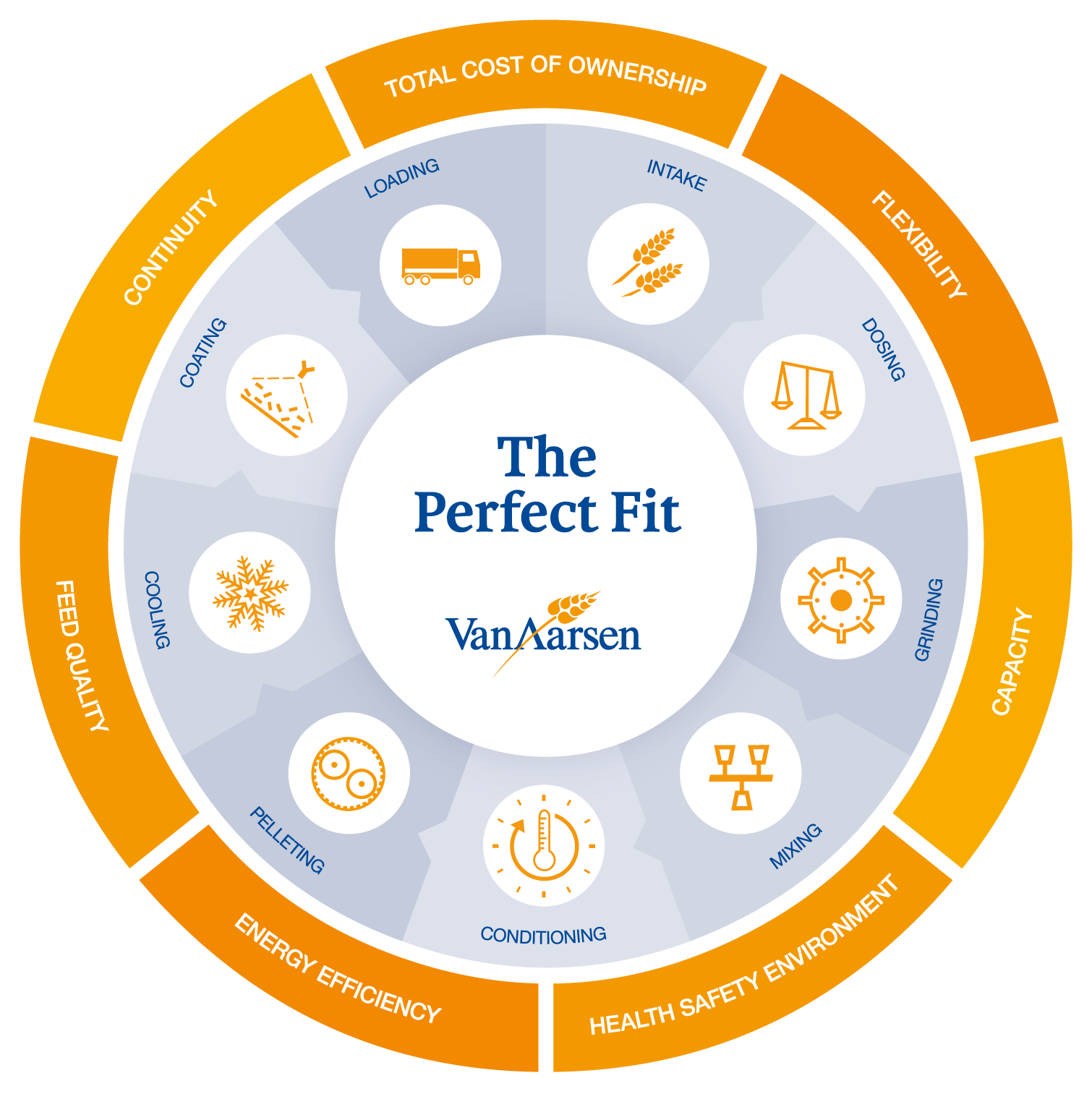The story of Van Aarsen: Understanding the importance of CTO

21 June 2021
Machine builder Van Aarsen is located in beautiful Limburg, the place of which people say they are just a bit more relaxed than in the middle of the country. Yet this says nothing about the impressive track record: Van Aarsen has existed for more than 70 years and is still in continuous development. How do they accomplish that?
Are you in need of complex machines or complete factories for the sustainable production of animal feed? Then you should be at Van Aarsen. The machine builder supplies worldwide installations for cow, pig, chicken and even fish feed. The company has invested intensively in innovation, especially in the past 20 years. Their portfolio now also supplies installations for the production of 50 to 100 tons of animal feed per hour. John Vluggen, team leader of the Electrical Engineering department and Bart Raemakers, project engineer in this department, know all about it. John: “Our department is increasingly able to work Configure to Order (CTO) and we are increasingly focusing on R&D activities.”
Integrated approach and CTO
Many organizations express the wish to integrate CTO in their engineering process, but how do you succeed? John: ‘Only 30% of the project choices can be made in the department. The other choices are dependent on other departments that are recorded in systems. You cannot do this kind of automation of the design process from one single department. You have to approach that integrally.’ That is why CTO is only used for some of the machines at Van Aarsen. Customization is also very important to us. Bart: ‘We regularly purchase parts of lines externally, of which we provide the controls. In order to have a well-integrated approach, we have made an organization scan beforehand. This is called a maturity model.”
..
Thinking in building blocks as a philosophy
Many interesting insights emerged from the organizational scan. Yet according to John, the contribution of the director of the organization is still the most important. John: ‘At 73 years old, he is still very young at heart and thinks in structures and objects, also known as building blocks. By constantly mentioning the importance of this line of thinking in objects in all departments, it has become a company-wide philosophy.’
.
Intelligent P&ID
The Electrical Engineering and Industrial Automation department is responsible for the entire process. When requesting quotations, a price is first determined. Then, based on the information from the mechatronic project engineer, the electrical installation and control system are determined. This provides insight into what the installation will look like. An important source of information is the intelligent P&ID. Bart: ‘This P&ID with data, such as tag names, product groups and engine data, is first loaded into our ERP system for the sake of its multidisciplinary character. This system includes the complete list of materials of all parts needed to build an installation. Here too, work is done based on predefined standards. This took a lot of effort, but it certainly paid off. The quality is guaranteed and the lead time is shortened.’
.
Checking and signaling
A standardization process is a long-term process, with trial and error. Bart: ‘We have learned a lot from previous projects. When automating the work process, it is important to always look for solutions together. When you stubbornly go your own way or put your head in the sand, the process stagnates.” The relevant control data is then synchronized from ERP with Typical Manager, where the configuration is checked to identify deviations from the Van Aarsen Standard. John: “This extra check is done to avoid unwanted surprises between the disciplines (mechanical, electrical and PLC automation) during commissioning. The correct I/O configuration is also made and managed within Typical Manager so that the external panel builder receives reliable data that is tailored to the control system.’
.
Standardize, manage and monitor
In order to make good designs efficiently, it is therefore important to work with standards. In addition, it is also important to properly manage and monitor the product data of purchasing parts. John: ‘It is important to us that the technical data of all products that we purchase is centrally stored and saved. We need this data for (partly automated) engineering. That applies to the technical data of all disciplines, for example, mechanical and electrical.’
.
Promoting a structured approach
When John joined Van Aarsen, he was given the assignment to greatly improve product data management (This is applicable for all physical products at Van Aarsen). For example, products and compositions of products may only appear once and must be easy to search for. But they also need to be kept in sync between different systems in a simple way. John: “This road has been taken, but not yet fully completed. Unfortunately, it sometimes happens that a lot of searching has to be done for the right product and/or the correct underlying datasheets, manuals and certificates. We want to signal that products are obsolete in an early stage. In practice, it sometimes happens that our purchasing department signals that a product is obsolete. Then our engineers have to choose a replacement product afterwards, which results in manual project changes. This is not only frustrating but also prone to errors. As soon as this process is also monitored by the R&D department in a simple structured way, it works way more efficiently!’
.
The importance of good product data is being endorsed by more and more different departments. Van Aarsen is actively working on this. A beneficial addition to product data management are 3D models (of motors, for example) to be able to model cabinet and machine views effectively in projects. We are proud of the fact that we can contribute to this process at van Aarsen with our knowledge, guidance and insights!
